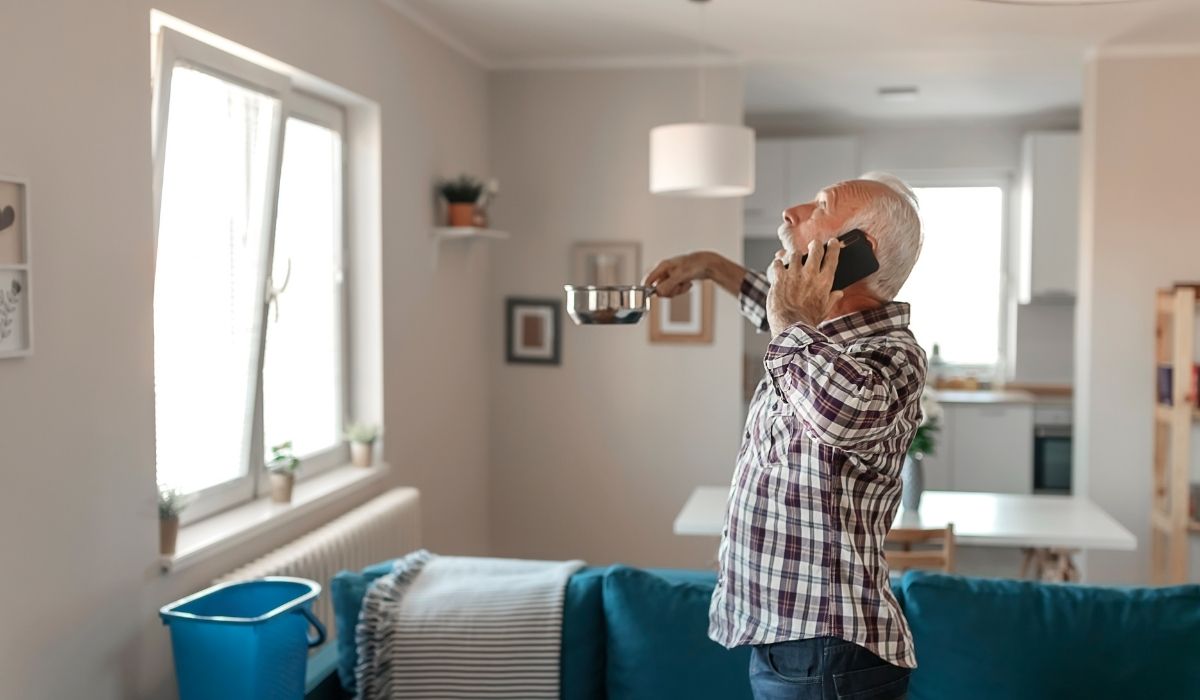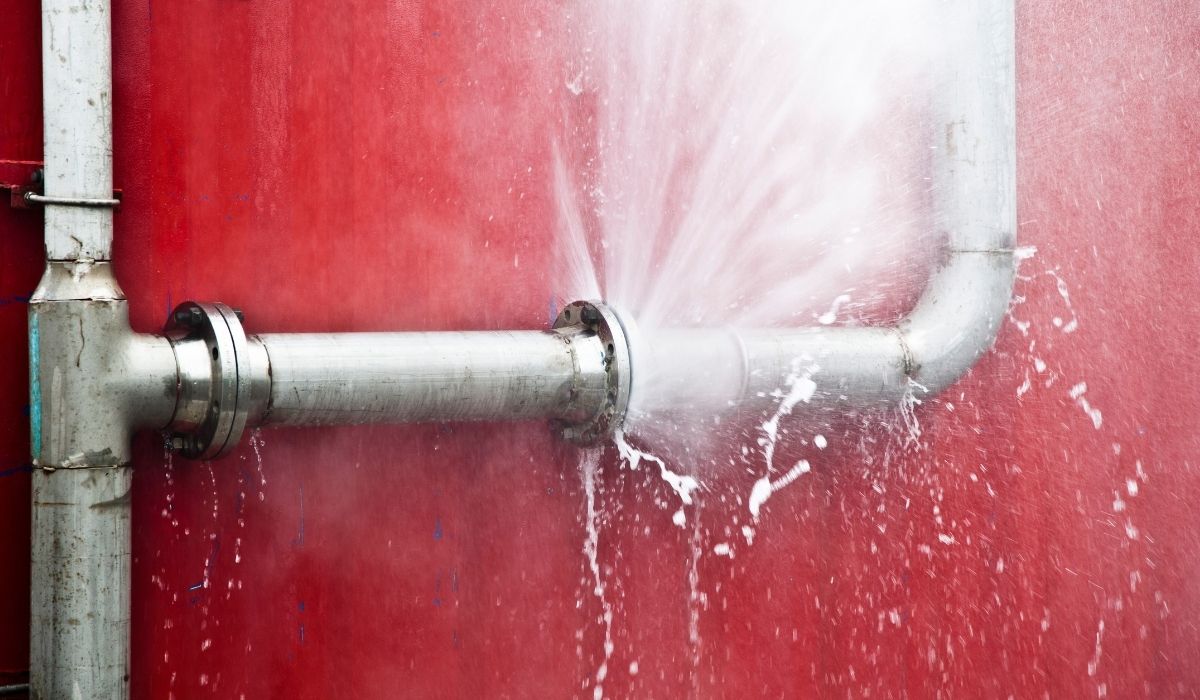Creative Temporary Fixes While Awaiting Professional Restoration

Temporary Fixes While You Wait for Professional Restoration
Water damage can wreak havoc on a home’s structure and belongings, causing not only immediate issues like leaks and flooding but also long-term problems such as mold, mildew, and structural decay. Homeowners facing water damage need swift, effective temporary solutions while waiting for professional restoration services. This article offers a comprehensive guide on temporary fixes that create a safe environment and prevent further deterioration of property. It explains actionable steps—ranging from shutting off water supplies to documenting damage—and provides clear instructions to mitigate risks related to electrical hazards, slipping hazards, and mold growth. With detailed procedures backed by studies and industry data, this guide highlights methods like using wet vacuums for water extraction, setting up fans to boost evaporation, and identifying hazardous leaks efficiently. The advice is designed to support immediate safety while ensuring that restoration professionals have less damage to repair. By following these steps, homeowners can protect their property from further water damage and ensure a smoother transition to full restoration. The information provided is crucial for those facing unexpected floods, burst water pipes, or internal leaks in areas such as bathrooms, kitchens, and basements. This article not only serves as a practical checklist but also helps homeowners understand the risks involved and the importance of early intervention.
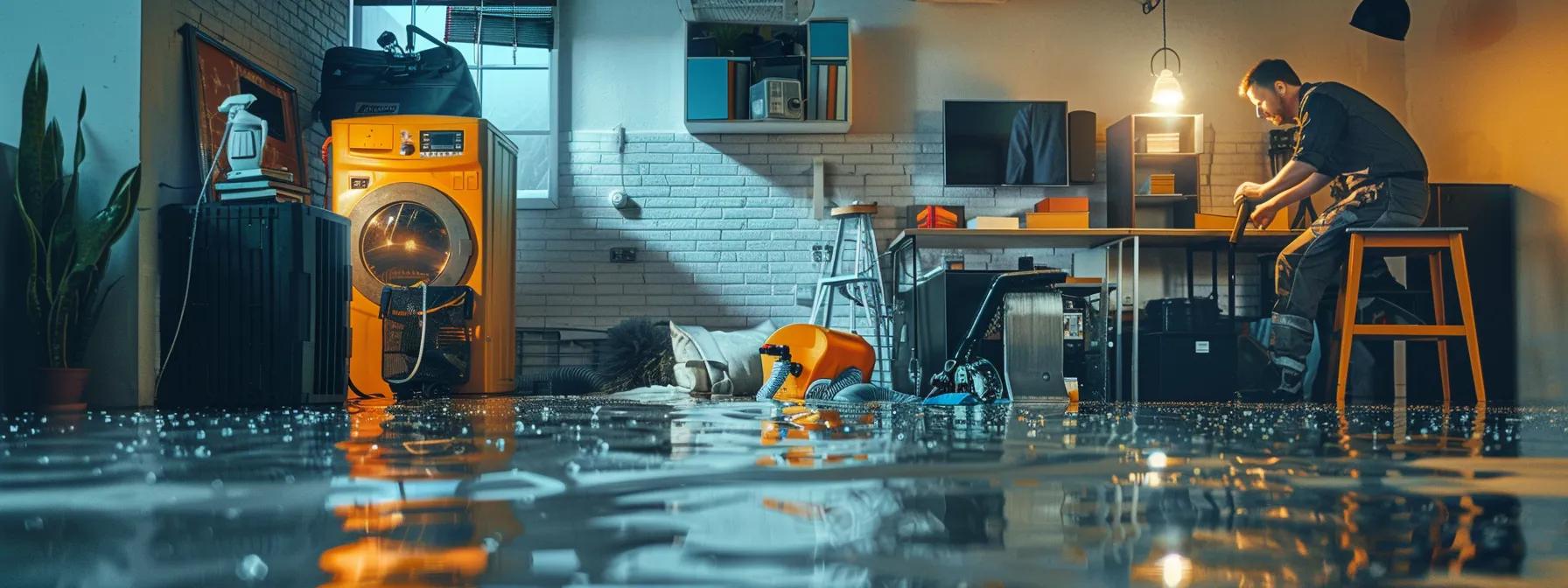
Prioritize Safety and Implement Emergency Water Leak Fixes
When water damage strikes, the very first priority must be ensuring human safety. Immediate action is crucial to avoid electrical hazards and potential injuries from slippery surfaces. Homeowners must identify and address any electrical hazards immediately; water and electricity are a dangerous combination that can lead to electrocution or fire. The first step is to switch off power in the affected area—if necessary, cut power from the circuit breaker to prevent accidents. Additionally, water leaks can conceal hazardous conditions such as frayed wiring or overloaded outlets, necessitating rapid intervention.

Identify and Address Electrical Hazards Immediately
Electrical hazards become a primary concern when water intrusion occurs. Water can weaken insulation and create conductive pathways, increasing the chance of short circuits or electrocution. It is essential for homeowners to visually inspect and, if possible, disconnect electrical devices and appliances in the affected area. If the leak is near any wall outlets or exposed wiring, it is advisable to switch off power from the main panel immediately. Safety experts, including those cited by the National Fire Protection Association, emphasize the importance of recognizing that standing water near electrical outlets or frayed wiring can result in significant harm. A certified electrician should evaluate these hazards as soon as possible, but while waiting, isolating the affected zone minimizes risk.
Locate and Shut Off the Main Water Supply
The next critical step is to locate and shut off the main water supply. This action stops additional water from exacerbating the damage and creates a controlled environment for remediation efforts. Homeowners should locate the nearest water shut-off valve, typically found near the water meter, and turn it off to prevent further ingress. Detailed instructions provided by local utility companies often highlight the importance of familiarizing oneself with this valve before any emergencies occur. Once located, turning off the water supply immediately minimizes the volume of water entering the property, crucial for effective temporary repairs.
Stop Minor Leaks With Basic Plumbing Patches
For small leaks that arise from minor pipe damage or loose fittings, homeowners can use basic plumbing patches as a temporary fix. Epoxy putty, for instance, can be applied over a leaking pipe as a quick stop-gap measure. Though not a permanent solution, this method can hold for a limited time while awaiting professional repair. It is vital to follow the manufacturer’s directions when using adhesive compounds or silicone sealants; improper application may worsen the issue. For additional guidance, studies published by the American Society of Plumbing Engineers suggest that these temporary fixes reduce water loss by up to 70% until a permanent repair is executed.
Secure the Area From Further Water Intrusion
To prevent additional water from entering the affected area, homeowners should secure vulnerable entry points such as windows, doors, and roof vents. Using heavy-duty plastic sheeting and duct tape can create a temporary barrier against rain or runoff. This simple yet effective measure helps maintain safety, especially during inclement weather or ongoing flooding situations. Protective barriers also prevent contaminated water from damaging undisturbed sections of the home—an essential step before professional remediation.
Assess Potential Slip and Fall Dangers
Even after turning off the water supply and addressing leaks, standing water on floors and surfaces poses significant slip-and-fall hazards. Homeowners must promptly assess areas of accumulation and take precautionary measures, such as placing warning signs or physical barriers around slick surfaces. Temporary non-slip mats or strategically positioned towels can dramatically reduce the risk of accidents. Experts in home safety continually stress that in emergency water damage situations, risk management should include careful monitoring of floors to protect both residents and pets.
Key Takeaways: – Immediately switch off electrical power in water-affected areas. – Shut off the main water supply to minimize additional damage. – Utilize temporary plumbing patches for minor leaks. – Secure openings to prevent further water intrusion. – Address slip hazards by placing appropriate barriers.
Implement Immediate Temporary Water Damage Solutions
After ensuring safety, the next focus should be on mitigating the water damage using immediate, temporary solutions. Removing standing water helps to prevent the growth of mold and minimizes the likelihood of structural decay. Homeowners should begin by extracting water from the affected areas using buckets, mops, or wet vacuums. These solutions, though not permanent, are critical to reducing moisture levels until professionals can arrive.
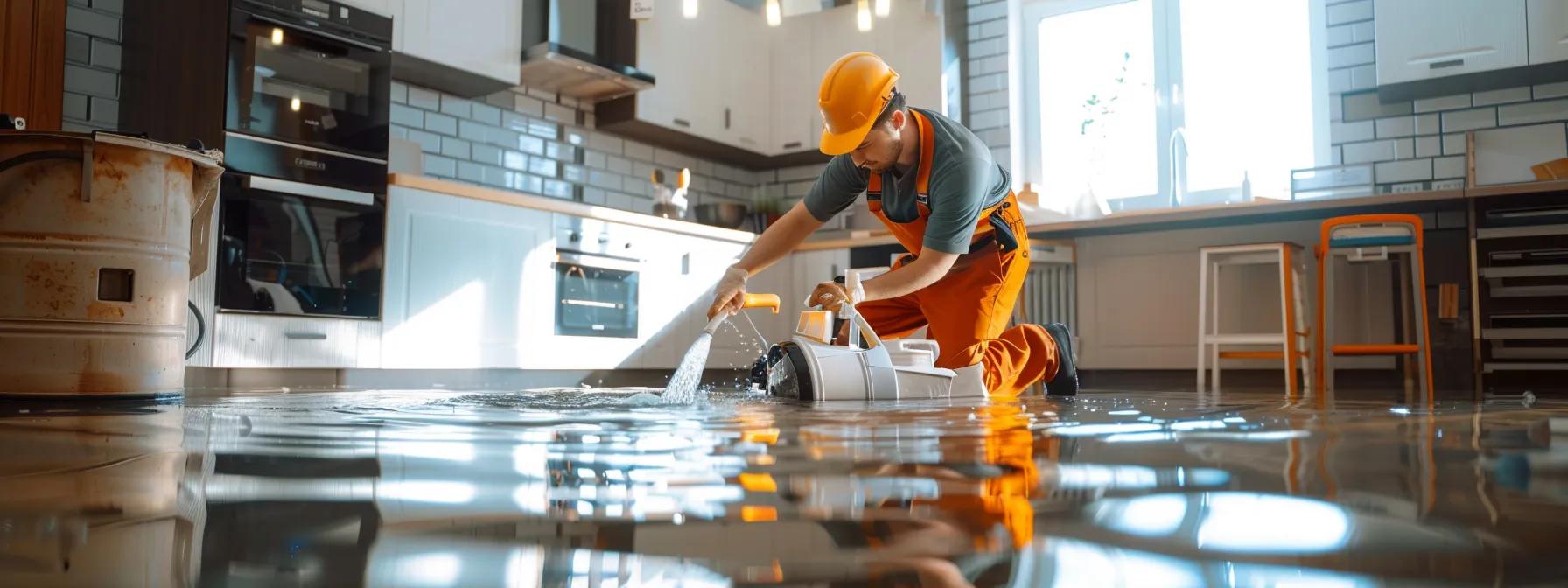
Remove Standing Water Using Buckets or a Wet Vacuum
The removal of standing water is a priority in mitigating water damage. Homeowners should use buckets, mops, and if available, a wet vacuum to extract as much water as possible. The use of a wet vacuum not only speeds up the process but significantly reduces the risk of mold formation, as stagnant water can promote bacterial growth and mildew development. Studies by the Centers for Disease Control and Prevention (CDC) indicate that rapid water removal within the first 48 hours considerably lowers mold-related risks. Furthermore, removing excess water facilitates the drying process in conjunction with other dehumidification measures.
Begin Air Circulation With Fans and Open Windows if Safe
Improved air circulation is critical in expediting the drying process. Homeowners should use fans, portable dehumidifiers, or oscillating fans to promote airflow. Opening windows and doors can also help, provided that the outdoor air is dry and free from contaminants. Enhanced ventilation not only speeds up water evaporation but also prevents the buildup of humidity that might encourage harmful bacterial proliferation. Energy studies have shown that using fans to circulate air can increase drying speeds by up to 30%, thereby reducing the window for mold development. Ensuring safety during these procedures is paramount, especially if outdoor conditions involve heavy rain or contaminated air.
Mop Up Excess Moisture From Floors and Surfaces
Mopping up remaining moisture is a crucial step that should not be overlooked. Homeowners should thoroughly dry floors, walls, and surfaces with absorbent towels or a mop. This helps to remove the absorbed water held within porous materials. Wet surfaces, if left unattended, can serve as breeding grounds for mold and mildew, which in turn can release harmful spores into the air. Professional guidelines suggest that even after standing water is removed, residual moisture must be mopped up to reduce long-term damage and prevent secondary water damage effects such as staining or warping of structural components.
Place Aluminum Foil or Wood Blocks Under Furniture Legs
To protect expensive furniture and valuables from water damage, temporary protective measures should include elevating items. Placing aluminum foil or wood blocks under furniture legs prevents water from seeping underneath, which can cause stains or structural damage to furniture bases. This method not only protects the floor but also minimizes the movement of water across the surface. In homes prone to flooding, proactive measures like these can reduce repair costs and facilitate quicker clean-up once professional restoration commences.
Relocate Wet Rugs and Upholstery to a Dry Space
Wet fabrics have an increased risk of mold, mildew, and odor absorption. Therefore, it is essential to remove wet rugs, upholstery, and drapes from the affected areas and relocate them to a dry, well-ventilated space. If possible, hanging these items outside in direct sunlight—provided it is safe and dry—can accelerate drying. These steps are pivotal in preventing further deterioration of textiles and reducing the overall microbial load in the home. This preventative move is often recommended by water damage restoration professionals and has been shown to reduce post-flood contamination by a significant margin.
Key Takeaways: – Use wet vacuums or buckets to remove standing water quickly. – Enhance airflow with fans and open windows to promote drying. – Mop up residual moisture to prevent mold growth. – Elevate furniture to stop water from causing further damage. – Relocate wet fabrics to accelerate the drying process.
Undertake Short Term Flood Damage Repair Measures
Once immediate water removal is completed, homeowners should focus on short-term repair measures to prevent additional damage. These temporary fixes can slow down deterioration while waiting for professional intervention. Attending to saturated materials, extracting water from confined spaces, covering exposures, and clearing blockages are all crucial tasks. These repair measures can help maintain the integrity of structural elements and protect belongings.
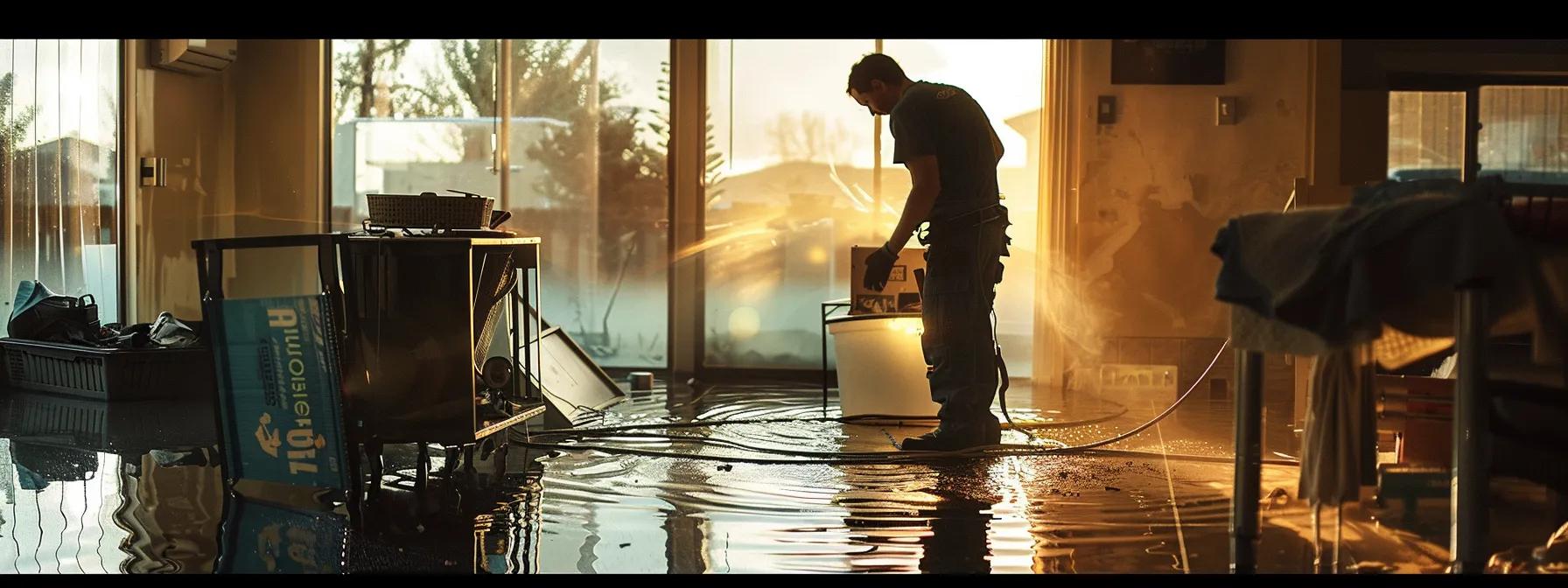
Remove Saturated Carpets and Padding if Manageable
Wet carpets and padding create a conducive environment for mold, bacteria, and unpleasant odors. Immediate removal of these soaked materials is advised if the damage is extensive enough to hinder drying efforts. Though replacing carpeting is an expensive endeavor, leaving saturated materials in place can lead to long-term structural damage and health hazards. Homeowners should carefully remove the affected carpets and padding and transport them to an area where professional cleaning or disposal can take place. In many cases, temporary removal is the best way to prevent the growth of mold spores and reduce indoor air contamination.
Extract Water From Confined Flooded Basements or Crawlspaces
Basements and crawlspaces are especially vulnerable to prolonged dampness due to poor ventilation and limited natural light. In these confined areas, water extraction can be particularly challenging. Utilizing industrial-grade wet vacuums, sump pumps, or even manual extraction methods helps lower the moisture content in these spaces. Research by the Environmental Protection Agency (EPA) has highlighted that prolonged moisture in basements significantly increases the risk of mold proliferation. Immediate extraction of water from these confined areas is critical to preventing long-term damage to structural components and avoiding costly future repairs.
Cover Damaged Roofs or Windows With Tarps
Temporary measures such as covering damaged roofs, windows, or other openings with tarps can significantly minimize further water ingress. Tarps serve as an immediate barrier against weather-related elements, especially during storms or heavy rains. This temporary solution is widely recommended by disaster management experts because it prevents additional saturation and stabilizes the structural integrity of the building. The tarmac and durable plastic sheets used for this purpose should be securely fastened to ensure they remain effective. Installing a robust temporary cover also protects valuable interior assets until permanent repairs can be completed.
Clear Debris From Drains and Gutters
Debris accumulation in drains and gutters can hinder the natural flow of water, causing backups and secondary water damage. It is critical to clear these areas immediately after a flood. Removing debris, dead leaves, and sediment ensures that any remaining water can exit efficiently, thereby reducing the risk of further flooding or water stagnation. Homeowners may use gloves and basic cleaning tools to accomplish this task, but if the blockage is severe, professional cleaning may be required. Continuous maintenance of these drainage systems is essential for long-term home protection and prevention of recurrent flooding in vulnerable areas.
Protect Valuables by Moving Them to Unaffected Areas
While the water damage is being repaired, it is vital to safeguard valuable items by relocating them to areas that have not been affected. This includes electronics, important documents, and sentimental items. By moving these possessions to dry spaces, homeowners reduce the risk of further destruction and simplify the restoration process later. Often, creating a temporary storage space in an unaffected room minimizes the need for double handling once professional restoration services are available. This step is part of a strategic approach to damage control and resource protection, ensuring that irreplaceable items are preserved against subsequent water damage.
Key Takeaways: – Remove wet carpets to prevent mold growth. – Extract water from confined spaces to reduce structural damage. – Use tarps to temporarily cover exposed roofs and windows. – Clear drains and gutters for effective water runoff. – Relocate valuables from damaged areas to protect against further loss.
Initiate Basic Cleanup and Drying Efforts
After flood repair measures address immediate structural concerns, homeowners should initiate a systematic clean-up and drying process. This involves removing damaged materials, wiping down surfaces, and ensuring effective airflow throughout the affected areas. Basic cleanup not only mitigates the risk of mold development but also prepares the space for thorough professional restoration. Effective cleaning and drying are crucial steps in ensuring that water damage does not lead to secondary health issues or permanent structural harm.
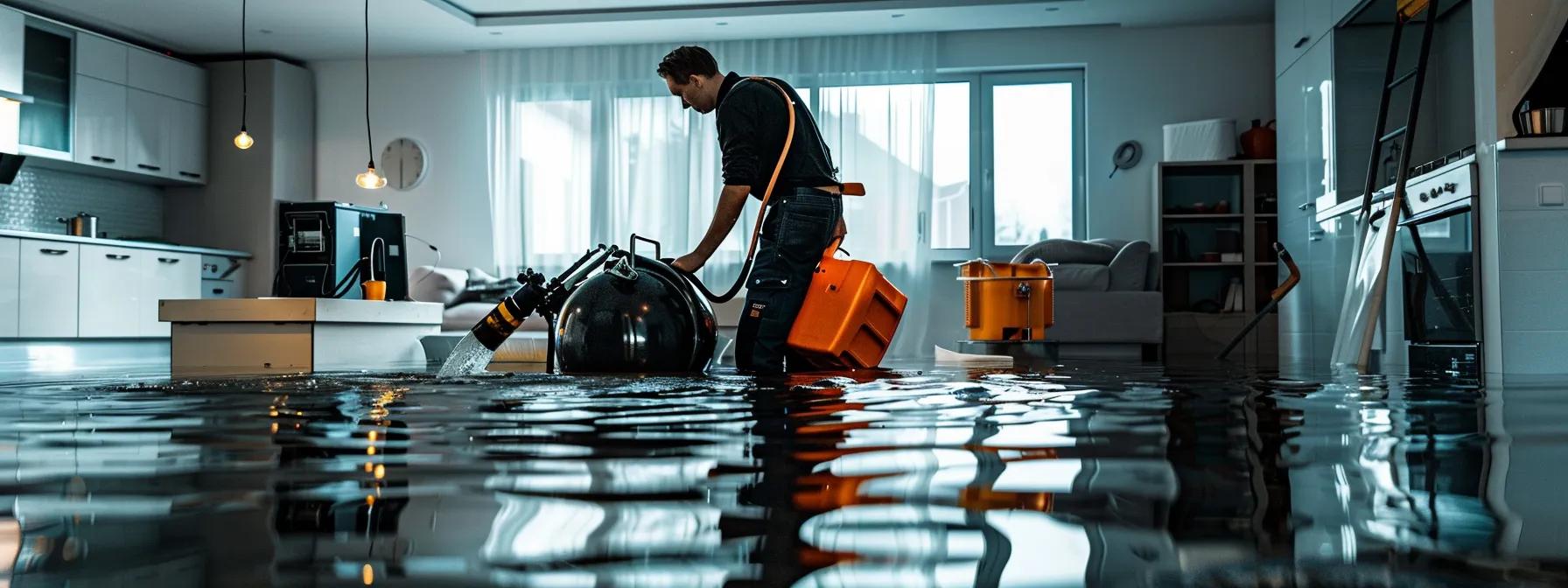
Carefully Remove Soaked and Irreparable Porous Materials
Porous materials such as insulation, ceiling tiles, and certain types of drywall absorb significant amounts of water, making them prone to mold contamination. Homeowners must carefully remove any materials that are saturated beyond repair. This can involve tearing out sections of drywall, removing soaked insulation, or discarding damaged ceiling tiles. Research published in the Journal of Building Engineering suggests that the prompt removal of porous materials from water-damaged areas can reduce the incidence of mold growth by nearly 40%. Although this process can be labor-intensive, it is necessary for maintaining indoor air quality and preparing the area for permanent restoration.
Wipe Down Non-Porous Walls and Fixtures
Non-porous surfaces such as metal, glass, and hard plastics do not absorb water, but they can harbor residues that may eventually promote microbial growth. Homeowners should wipe down all walls, fixtures, and countertops using disinfectants and water extraction cloths. The Centers for Disease Control and Prevention (CDC) recommends using an EPA-registered disinfectant to kill pathogens that linger following water exposure. Wiping surfaces thoroughly ensures that any residual moisture or contaminants are removed, helping to prevent the development of odors, stains, and secondary mold infestations. Regular cleaning of these surfaces is essential in maintaining a safe, dry environment.
Ventilate Affected Rooms Thoroughly to Aid Drying
Effective ventilation is a cornerstone of any drying strategy. After the water and affected materials are removed, home restoration efforts should shift toward maximizing the circulation of fresh air. Opening windows and doors, using exhaust fans, and installing portable dehumidifiers together accelerate the drying process significantly. Studies by indoor air quality experts have found that increased ventilation in water-damaged areas can reduce humidity levels by up to 30% within the first 48 hours of remediation. This step not only expedites drying but also helps to flush out airborne mold spores and pollutants. The goal is to create an environment that discourages microbial growth and prepares surfaces for permanent repairs.
Dispose of Debris Safely and as Per Local Regulations
Removing water-damaged debris is vital for both environmental safety and the efficiency of the cleaning process. Homeowners must dispose of materials such as soaked insulation, carpet remnants, and broken furnishings in accordance with local regulations. Special waste management guidelines for contaminated materials should be followed to ensure that the disposal process is safe and effective. Proper disposal minimizes health risks and eliminates obstacles for restoration professionals who will later conduct a comprehensive repair of the property. Maintaining organized debris removal also allows for better documentation of damages during insurance claims and ensures a clear work area for subsequent restoration steps.
Key Takeaways: – Remove porous materials to prevent long-term mold growth. – Wipe down non-porous surfaces with EPA-approved disinfectants. – Enhance ventilation with natural and mechanical airflow solutions. – Dispose of damaged debris in line with local safety regulations. – Proper cleanup sets the stage for permanent professional repair.
Document Water Damage Extensively for a Smooth Claims Process
Documenting water damage is critical for insurance claims and for ensuring accurate recovery estimates. Homeowners should maintain rigorous records of all affected areas, including photographs, videos, and detailed logs. This documentation supports claims submitted to insurance companies and provides a clear timeframe and cause analysis for restoration professionals. Keeping a detailed record also helps in budgeting future repairs and ensuring that no aspect of the damage is overlooked.

Take Comprehensive Photographs and Videos of All Affected Zones
High-quality photographs and videos serve as essential evidence for insurance claims and restoration assessments. Homeowners should capture images from multiple angles, both close-up and wide, to document the full extent of the damage. It is important to ensure that photographs clearly show water levels, the condition of structural components, and any visible mold or debris. Professional recommendations often suggest using a high-resolution camera and consistent lighting conditions for accurate documentation. Detailed visual records not only help expedite the insurance process but also provide a thorough reference for restoration contractors to develop a precise repair plan.
Create an Itemized List of Damaged Possessions and Structures
Beyond visual documentation, a written itemized list of all damaged possessions and structural elements is crucial. This list should include descriptions, estimated values, and the extent of damage for items ranging from furniture and electronics to building components like drywall and insulation. An organized inventory enables homeowners to track losses comprehensively and submit precise claims to their insurance provider. It also facilitates prioritization of repair efforts, as the list can serve as a roadmap for what requires immediate professional attention versus what can be temporarily salvaged or replaced. This methodical approach increases the efficiency of both the claims process and the subsequent restoration work.
Keep All Receipts for Temporary Repair Materials Purchased
Every expense incurred during the temporary repair period should be documented with receipts and written notes. These receipts serve as proof of expenditure for insurance claims and auditing purposes. Materials purchased for emergency fixes—such as tarps, disinfectants, and dehumidifiers—can quickly add up, and keeping track of these costs ensures that homeowners can be reimbursed accordingly. Detailed financial records also provide insight into the overall cost impact of the crisis and help in planning for future contingencies. Organized documentation in this regard is often a prerequisite for a successful claim and can expedite financial recovery.
Note the Date, Time, and Suspected Cause of the Water Damage
Recording the chronology of events is vital to understanding the cause and progression of water damage. Homeowners should note the time when the damage was first observed, the specific date when each temporary fix was applied, and any factors that may have contributed to the incident. A detailed log provides context for insurance adjusters and restoration professionals, enabling a more accurate estimate of repair costs and priority areas. Historical data such as this may also reveal insights into potential future risks, guiding homeowners in making improvements to their property’s safety measures.
Key Takeaways: – Capture high-quality photographs and videos of all damage. – Maintain an itemized list of damaged items for insurance claims. – Save receipts for all emergency repair purchases. – Log the timeline and suspected cause of damage for context. – Thorough documentation ensures smoother claims and restoration processes.
Understand Critical Actions to Avoid Before Professionals Arrive
While immediate measures are necessary to reduce water damage, certain actions can inadvertently worsen the problem. Homeowners must be cautious about activities that might lead to additional hazards or complicate the restoration process. Avoiding these critical missteps is essential until professional restoration teams assess the full impact of the damage. This section outlines behaviors and activities that should be strictly avoided in order to preserve property integrity and ensure safety.

Avoid Using Standard Household Vacuums for Large Water Volumes
Standard household vacuums are not designed to extract water and can be dangerously ineffective if used on flooded floors. Attempting to use a regular vacuum can result in electrical shocks, appliance damage, or further spread of moisture into hidden spaces. Experts in water damage restoration advise that only specialized water extraction equipment, such as wet vacuums or industrial-grade pumps, be used for significant water removal tasks. Using the wrong equipment increases risks considerably and can cause further deterioration of carpet fibers and floor surfaces. Homeowners should strictly avoid standard vacuums until proper tools are accessible.
Refrain From Activating Electrical Systems in Wet Environments
During water damage incidents, electricity and water pose a deadly combination. Homeowners should never activate electrical systems in wet conditions, as this can lead to not only fires but also potential electrocution hazards. All electrical appliances should be disconnected and completely isolated from any moisture. Professional electricians must assess the situation before any power is restored to the affected areas. This precaution helps to prevent short circuits and preserve the integrity of electrical systems, ensuring that no further damage occurs due to the blend of water and electricity.
Do Not Attempt Major Demolition or Structural Alterations
During the emergency period, it might be tempting to start major demolition or structural changes to remove damaged materials quickly. However, these actions can be counterproductive by compromising structural stability and complicating an insurance claim. Structural components, even if water-damaged, require a professional evaluation before any alteration is attempted. Homeowners should instead focus on minor, necessary fixes and leave large-scale demolition for experienced contractors. Rushing major structural changes without understanding the extent of damage may lead to further safety risks and higher repair costs in the long run.
Postpone Painting or Sealing Damp or Damaged Surfaces
Applying paint or sealants to damp surfaces might temporarily disguise water damage, but it can trap moisture underneath and promote mold growth. Until fully dry, damaged areas must be left unsealed so that moisture can evaporate naturally. Painting over moist drywall or sealing waterlogged wood can lead to peeling, bubble formation, and long-term deterioration. Experts advise waiting until professional drying measures confirm that surfaces are completely moisture-free. This delay, although inconvenient, is critical for ensuring that permanent repairs are correctly implemented without the need for repeated interventions.
Resist Using Direct High Heat for Rapid Drying of Materials
While it might seem logical to use heaters or high-powered dryers to hasten drying, directly applying high heat can damage building materials and lead to cracks, warping, or additional stress on weakened structures. Instead, controlled methods of drying should be employed, such as dehumidifiers and gentle fans that promote gradual evaporation. Rapid drying through high heat can also cause uneven moisture removal, potentially creating pockets of trapped water that later foster mold growth. Current research suggests that gradual, controlled drying methods result in a more uniform moisture reduction and prevent secondary damage.
Key Takeaways: – Never use a household vacuum to remove water. – Avoid activating electrical systems until safe. – Do not perform major demolition without professional guidance. – Postpone painting or sealing until surfaces are dry. – Refrain from using high heat; opt for gradual drying techniques.
Final Thoughts
Temporary fixes are essential for mitigating further damage while awaiting professional water restoration services. By prioritizing safety, implementing immediate water removal, and documenting the damage meticulously, homeowners can protect their property from long-term deterioration. Simple, effective actions—such as shutting off the main water supply, using proper extraction tools, and avoiding high-risk behaviors—contribute to a smoother recovery process. Homeowners are encouraged to follow these guidelines closely and contact professionals as soon as possible for comprehensive restoration.
Frequently Asked Questions
Q: What is the first step I should take in a water damage emergency? A: The first step is to ensure safety by shutting off the main water supply and turning off electrical systems in the affected area. This minimizes further water damage and reduces electrical hazards until professional help arrives.
Q: How can I temporarily remove water from my home? A: Use buckets, mops, and a wet vacuum for water extraction. Also, promote drying by circulating air with fans and opening windows if weather conditions permit. This combination helps reduce moisture levels and delays mold growth.
Q: Why is it important to document water damage immediately? A: Documenting water damage with photos, videos, and detailed logs helps support insurance claims and provides restoration professionals with critical information to accurately assess the damage, facilitating a smoother repair process.
Q: Can I use household appliances for water removal? A: No, standard household vacuums are not designed for water extraction and can be hazardous. Instead, use specialized equipment like wet vacuums or pumps designed for water removal to mitigate risks of electrical shock and further damage.
Q: When is it safe to restore power after water damage? A: It is safe only after a professional electrician inspects the property to ensure that all electrical systems are free of moisture and damage. This step prevents short circuits and other fire risks before full power restoration.
Q: What should I avoid doing to prevent long-term issues after water damage? A: Avoid using household vacuums for water removal, do not paint or seal damp surfaces, and refrain from applying high heat to dry materials quickly. These actions can lead to additional damage, mold growth, and improper drying.
Q: How long should I wait before seeking professional help for water damage restoration? A: Professional help should be sought immediately after ensuring safety. The sooner professionals begin restoration, the better the chances of preventing secondary issues like mold growth and structural deterioration.


